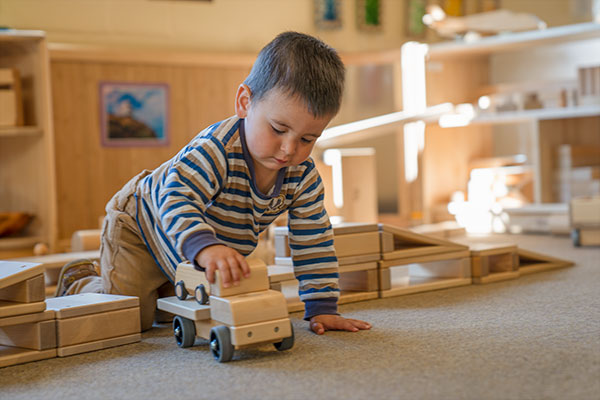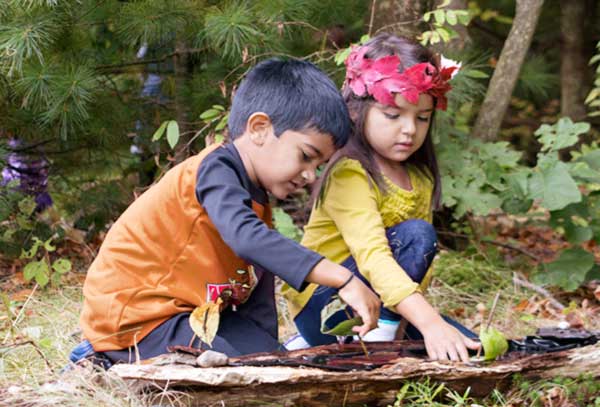Impressions of Keilhau
Rediscovering Froebel's roots
| May 2016The first weekend in May 2016 found a small delegation from the UK in a little village in Germany, rediscovering Froebel in Keilhau, the great educator’s valley for education. The event was hosted as preparation for Keilhau school’s 200th anniversary next year. Here Dr. Julian Grenier shares his impressions of the weekend and thoughts on the Froebelian tradition as it is today. More than that, it gives a feeling for the man Froebel, what he strove for, his disappointments and frustrations, but nevertheless hope for the future.
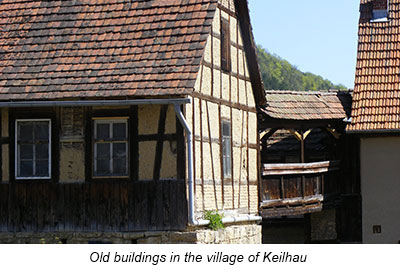
To arrive in Keilhau, Germany, is to begin at the beginning: the origins of the Kindergarten and of Froebelian education are there. Froebel famously surveyed the beautiful, lush green German landscape with its small and dilapidated village and said, “here is a valley for education.” Much of what we now take for granted about early education dates back to Froebel’s revolutionary work there. It was Froebel who believed that young children should learn through play and through first hand experiences with natural materials like sand and water, and that physical education was important in school. Froebel put the relationship between educator and child at the heart of learning, and saw each child as in individual whose wishes and choices should be respected. These were revolutionary ideas – so revolutionary that both his school and his kindergarten were banned at different times by the Prussian authorities.
I am not Froebel trained, but I do hold a deep respect for his life and work, and I also believe in the importance of engaging with the past in order to understand the present. So the opportunity to visit Keilhau with a study group, arranged by Community Playthings, was not to be missed. And the spirit of unity and fellowship that runs through Froebel’s theories was tangibly lived out in the little community of the Keilhau school, where we stayed for three nights, thanks to the exceptional generosity of the school staff and the Community team.
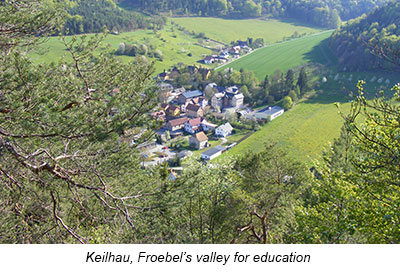
Keilhau lies at the end of the longest cul-de-sac in Germany, and some might feel that Froebelian education itself is a dead-end: historically interesting, but on a road to nowhere. After all, child-centred education is out of fashion in the English system now. Every day we hear people shouting about standards, skills and tests: the voices supporting the education of the whole child and emphasising each child’s unique spirit are quieter, and they are on the margins of the debate. Whereas the Montessori and Steiner approaches to education have remained distinct and known about in England, Froebel’s ideas have largely been absorbed into mainstream thinking – meaning that, depending on your viewpoint, the tradition is largely forgotten, or the tradition lives on but without its name, especially in early years education and childcare. Every time you encounter children playing with blocks, with sand, water or clay, or cutting their own fruit and vegetables, or planting and tending plants, you are seeing Froebelian practice. Treasure Basket play was developed by the Froebel-trained Elinor Goldschmied, and the Toy Library Movement in England was started in 1967 by a Froebelian teacher called Jill Norris.
Keilhau is a magnificent place, and encountering Froebelian education today, and its history, and the place where it all began, made for an intensely moving experience. The landscape is absolutely beautiful: a place for contemplation and a refuge from the busy-ness and intensity of life in the English educational system.
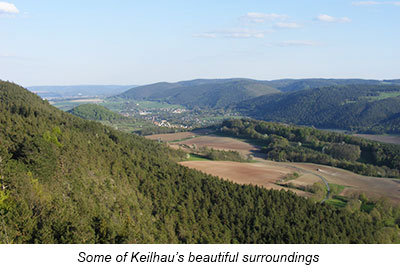
I don’t want to give a full account of my experiences, but instead I will offer a few impressions.
Froebel had a deeply unhappy early childhood, and I found visiting his family home and village sad and affecting. His father was the Lutheran pastor, presiding over an astonishingly large and grand village church where sermons were delivered from an enormous pulpit set high above the congregation. You could sense how small and insignificant a child might feel there. But it was much worse for Froebel, whose mother died when he was very young and who was considered a rather embarrassing and perhaps simple-minded child, bringing shame onto the pastor’s family. So he was prevented from sitting in church, and was educated at the girls’ school in the village - making him an object of mockery and bullying by both boys and girls. The few happy memories he had of his father were of times they spent gardening together. His step-mother made a scapegoat of him in the family, and famously locked him in the cellar for some misdemeanour, forgetting all about him until the following morning when she noticed a gap round the breakfast table. Opening the cellar door, she found him dressed neatly, hair combed: he told her that his birth mother had been with him all night and had dressed and washed him in the morning. That inner conviction of being loved and cared for must have carried him through that bleak childhood, until he was taken on by a kindly uncle.
Whereas some would have reacted with bitterness and anger, maybe even meting out similar treatment in turn to other children, Froebel’s life and work could be seen as a process of healing for his soul. He offered a deep love and respect to all the children he educated. Froebel’s first kindergarten was opened in a house which was known locally as the house with two cellars: what a magnificent way to overcome his own dreadful memories of punishment, to build the republic of childhood over the tops of the cellars. Perhaps remembering those rare, happy times with his father, he arranged for each child in the kindergarten to have their own tiny plot outside for the cultivation of plants. Despite the cruel treatment he experienced from his stepmother, his training institute offered one of the very first opportunities for women to gain a professional certificate as educators and to work in a profession previously reserved for men.
But there are also tensions, or even contradictions, in Froebel which are not brought to the fore in the admirable museum of his life and work located in Oberweissbach. Froebel placed great emphasis on the unity of child, mother and father: yet in his school, young children boarded and only spent the summer with their families. Even Christmas was celebrated with their teachers and schoolfellows.
Froebel’s famous gifts and occupations – especially the beautifully-made sets of small blocks which fit perfectly into cube-shaped boxes – are displayed in the museum rather like Montessori apparatus. Exhibits show how a child would explore all the different possibilities of building with the eight small cubes, rather than showing the freer types of play with the materials which we are used to now in England. There are numerous books of instruction for teachers on how to present and use the gifts with children. Beautiful examples of paper folding and weaving are also shown. But it can all feel rather like teachers were being taught to follow a step-by-step instruction manual. The more open-ended Froebelian practice of using clay, sand, and water, and playing out in the garden, are given relatively little prominence. The familiar unit blocks, beautifully handmade nowadays by Community Playthings, are not actually Froebelian: block play as we understand it was developed in America well after Froebel’s death. *
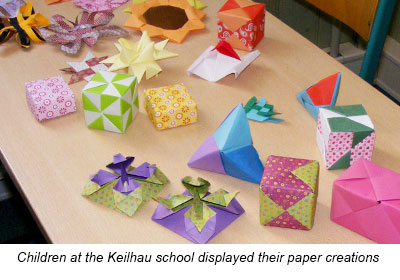
I was left thinking that on the one hand, it is a great strength of the Froebelian tradition that it has developed and renewed itself over the years. Different educators can bring different aspects to the fore. In England, some materials like the unit blocks have been updated, and others, like the paper-folding, made less prominent. But on the other hand, perhaps this modern practice is not really Froebelian at all, rather like the antique axe that’s been renewed over the years with three new handles and two new blades.
In Keilhau and the area around, there are both kindergartens and Froebelian schools which educate children up to school-leaving age. In the schools, the practice of beginning all learning with unity - with the whole, the practical and the real - is lived out daily. The charismatic educator Robert, who showed us round the school and enriched our whole stay with his twinkling eyes, mischievous anecdotes and historical facts, proudly showed us a beautiful, child-made domino. He invited us to consider how the child had to learn, along the way, how to measure a rectangle that will divide into two squares, how to draw an accurate line at 45 degrees, and how to space the two dots equally on that line. This was undoubtedly a rich and engaging way of teaching a great deal of maths through practical application.
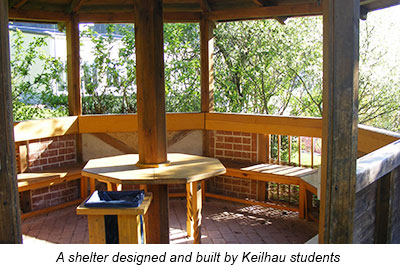
However, even one of Froebel’s very first students, Christian Eduard Langethal, recalled in his generous and respectful account of his schooldays that this method of learning did not suit all subjects. Langethal recalls that progress in learning new ideas and concepts could be frustratingly slow because Froebel “attempted to turn all learning into multisensory investigation”. After visiting the schools, I felt that this longstanding point of contention about Froebelian education could have been explored further.
But leaving Keilhau, sad-hearted, I was left dwelling on other matters. The beauty and tranquillity of this “valley for education” is an important rebuke to a world which can feel increasingly hostile to childhood. Here is a place where there is an unbroken, 199-year tradition of love for children and respect for their spirits and their minds. Froebel died feeling deeply anxious about the future of his life work, as the Prussian state moved to outlaw his methods. Yet his great, radical theories and practices survived: his organisational flair, evidenced in his successful calling together of a German-wide convention of teachers, spread his approach widely. Persecution in Prussia did not kill off the movement, but rather dispersed the teachers across the world. Across Europe and especially in America, the kindergarten flourished. Through principled resistance and some deft political footwork, Keilhau survived both Nazi oppression and the enforced conformism of communist East Germany. Artefacts and documents were hidden behind panelling: the ideals never died.
In Voltaire’s classic tale Candide, the hero and his friends travel all across Europe and experience horrors and disasters everywhere. The conclusion? That we must cultivate our gardens, rather than travel endlessly and restlessly. Keilhau is located two kilometres down the longest dead-end street in Germany, and a glorious garden has been protected and cultivated there for nearly two centuries now. As Froebel himself wrote, “children are like tiny flowers: they are varied and need care, but each is beautiful alone and glorious when seen in the community of peers.”
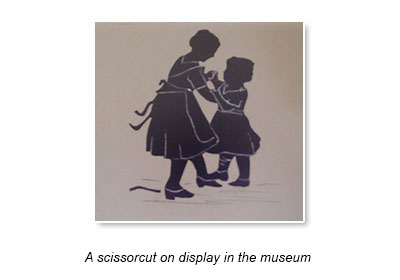
*The Unit block was designed by Caroline Pratt, a teacher inspired by Froebel. The standard Unit block is the same shape as the blocks of the fourth Froebel gift, which is based on the proportions on 1:2:4. Like Froebel, Caroline Pratt felt that open ended materials provided children with the best opportunity for play. (Community Playthings)




